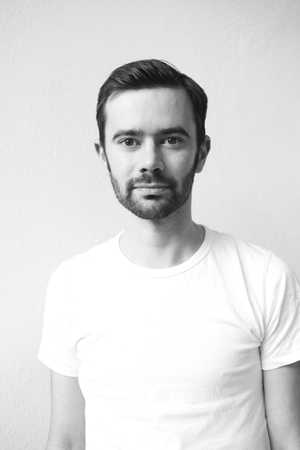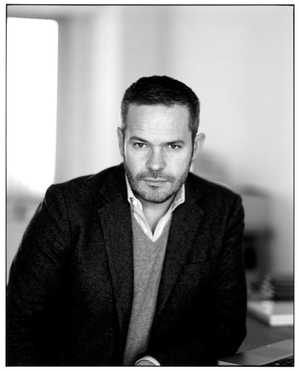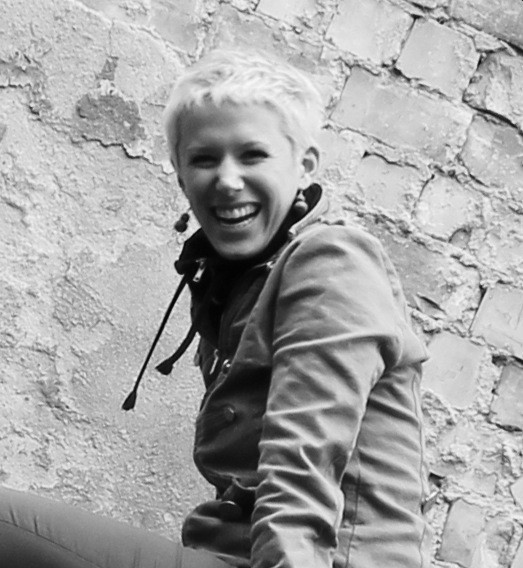Essays / Global
10 essays
For our double issue we’ve augmented our Essays section to cover a whole host of subjects: everything from online terrorism to overly obedient road-crossers is covered.


01/10
DESIGN IN BEIJING
The right idea
Aric Chen - Curator
Can you have a great design industry without political freedom? Some would argue that any attempt by Beijing to turn itself into the new Milan will be frustrated by the country’s human rights record and limits on free expression. The high-profile arrests of activist writers and artists would seem to back this up.
Yet for design to suffer from a lack of political freedom in China would require two things: the industry would need to represent some sort of political ideology and that ideology would have to be in conflict with the aims of the state. I think it’s safe to say that neither design nor the Chinese government, which is now more focused on maintaining its power than on its revolutionary ideals, is particularly ideological these days. In fact, in terms of their stated economic, environmental and social (versus political) imperatives, the two are well-aligned.
A more useful way to approach the issue would be to establish whether China’s system works for design. Though also capable of abominations, state power can achieve incredible things. (In the West, Haussmann’s Paris is an oft-cited example of a violently totalitarian act of which the fruits are much loved today.) But the fact that the Chinese government is throwing its weight behind design is a mixed blessing: it has become a national priority but it also risks sucking all the oxygen from the room. Unlike with roads, bridges and airports, bureaucracy does not help with creativity. There’s no shortage of design potential, ambition and intelligence in China but the system isn’t yet set up to support and nurture the private and individual initiatives that it will take to reach the country’s aims.
That being said, I have reason to think this may be changing. With Beijing Design Week, a government-mandated event that I worked on in 2011 and 2012, we were able to create a large-scale, citywide platform for design with minimal government interference.
Many other things will need to happen for Beijing to become the design capital it wants to be, including improved education, closer ties to industry, greater incentives to innovate and better protection of intellectual property rights. These are areas where a strong, committed government can come in handy but design also requires an environment that’s open, stable and healthy to thrive. There’s an awareness in China that significant political, economic and legal reforms are needed, although until the country experiences its leadership transition there is no certainty that things will improve.
We can only be cautiously optimistic about institutional change but I’m convinced that the prognosis for design is good. Like Milan, Beijing has the craft, aesthetic, intellectual and cultural traditions, alongside a vibrant entrepreneurial spirit, that provide a solid foundation. But Beijing shouldn’t aspire to be a new Milan. It should simply work towards becoming a better Beijing.
The writer:
Beijing-based Aric Chen is a writer, critic and curator specialising in design, architecture and art.

02/10
POLITICIANS
Rein in the rancour
Steve Bloomfield - Monocle’s foreign editor
The shift in British journalism’s attitude towards politicians over the last 50 years can be summed up in two questions. In the 1950s an interview with a politician ended with the zinger, “Is there anything you’d like to tell the nation, minister?” Recently, one high-profile interviewer summed up his sneery attitude towards the ministers he grills with the entirely neutral question, “Why is this lying bastard lying to me?”
Politicians across much of the western world are now treated with the sort of contempt and ridicule once saved for estate agents and, well, journalists. Some politicians even talk of “politicians” in similarly disdainful terms, desperately trying to somehow paint themselves as outside the mainstream.
As amusing as it may be to mock MPs and senators there must be some middle ground between deference and derision. It’s not because they all necessarily deserve to be treated with respect – some clearly don’t. But it’s not too hyperbolic to suggest that we risk undermining democracy itself if we continue to dismiss all politicians as in some way dishonest, selfish or useless.
This crisis – and it really is a crisis – is on a different scale to a scandal that effects one particular political party or one ideology. At least that gives voters the option to go elsewhere. When all politicians are seen in the same negative light it leaves voters with few options.
At the last congressional elections in the US the anti-politics mood helped those Republicans from the party’s nascent Tea Party wing. But after two years in Washington DC many of those self-proclaimed insurgents are now seen as no better than the career politicians they ousted. There are only so many times the anti-politics card can be played at an election before voters begin to suspect that every politician styles themselves as an “anti-politician”. Then the only outsiders tend to be extremists.
There is a dark side to those riding the anti-politics wave. Tea Party extremists that believe Barack Obama is a Muslim communist and the out-and-out fascists tearing down theatres and beating up immigrants in Athens are playing on the fear of the outsider and capitalising on the perceived corruption of the political class. We have been here before and it doesn’t lead to a healthy democracy.
Part of the problem is the gradual nature with which this crisis has enveloped Western democracies; like the apocryphal frog we have barely noticed the water boiling. Had we been thrown head first into the bubbling pot we would have leapt out immediately. The more trust that slips away from our elected officials and the less faith voters have that their replacements – indeed, any replacement – will make a difference, the less likely we are to vote. The less likely we are to vote, the weaker our democracy.
So let us start to accept a few basic facts about politicians. Most, be they on the left or the right, are good people. Most, be they conservative or liberal, are in politics for the right reason. Most, be they newcomers or old timers, work extremely hard. Let us, to use a slightly overworn but no less apt phrase, disagree without being disagreeable. It is de rigueur in an opinion piece like this to roll out a Winston Churchill quote about democracy being the worst form of government except for all the others. There it is. He was right, you know.
The writer:
Steve Bloomfield is Monocle’s foreign editor and has reported from more than 50 countries on five continents. He has never run for political office.

03/10
FINLAND
Language barriers
Simo Vassinen - Writer
Finland’s only attempt at dubbing a non-children’s television show went terribly wrong. In 2001, eight years after it first appeared on Finnish television, daytime soap opera The Bold and the Beautiful ran for a special week with a local voice cast. The wrath of the audience took TV station mtv3 by surprise; the channel got so many angry calls that they had to close phone lines two hours after Stephanie Forrester started speaking in theatre and film icon Seela Sella’s voice.
While the Nordic region tends to leave all programmes in their original language, dubbing is more prevalent elsewhere in Europe. A German roommate once refused to watch Arnold Schwarzenegger’s Terminator with me because without the familiar voice of German voice actor Thomas Danneberg it just “sounded weird”.
Finland is in a sticky situation language-wise. With only five million speakers worldwide there is a struggle to simultaneously reach out to the rest of the world by learning widely spoken languages and try to hold on to our own. In Germany, France and Italy, dubbing has been a way of cherishing local culture. Mussolini’s Italy banned all foreign languages. A Finnish study showed that a third of all texts that we come across in everyday life in our country have been translated from another language. I completed a Master’s degree in marketing without ever reading a marketing textbook in my own language. Because universities are ranked through international citations there is no way around the English language.
It is an easy argument to say that dubbing hinders your chances of grasping a foreign language. On the other hand, a Eurobarometer study from 2006 indicated that the majority of Europeans prefer to pick up their language skills from elsewhere. Research is still inconclusive on whether subtitling benefits a viewer’s language-learning skills as it’s thought that text written in another language may actually confuse the audiovisual messages.
The debate on dubbing and subtitling comes down to two discussions: the learning of foreign languages and the defence of one’s own culture. Ideally these go hand in hand but one may necessitate the sacrifice of the other. Finnish language teachers continuously worry about the deterioration of our language. More and more foreign words are incorporated into conversation and the pervasive abbreviations of the online world (lol! omg!) appear in school essays.
As for television, saying that dubbing should be restricted is a tricky claim to make. I, for one, would not wish to hear Stephanie Forrester replaced by a Finnish diva. Then again, I would like to see Finns fight for our language with Italian passion. We need to ensure that alongside subtitled foreign sitcoms we also have top-notch Finnish content. One healthy sign is that 2012 has seen record-breaking audiences for Finnish films – hopefully to be dubbed into many other languages.
The writer:
Simo Vassinen is a Finnish writer and breakdancer based in Berlin.

04/10
CYBERWAR
Wicked web
James Lewis - Writer
Cyber warfare risks becoming the punchline of a vaudeville routine, which would be unfortunate because there are real possibilities for harm. Of the countries that spend the most on their militaries, 12 are developing offensive cyber capabilities; these include Russia, China, Iran and North Korea. Cyber attack offers fast, long-range strikes that provide both tactical and strategic advantage.
The attacks that get all the attention are the massive Pearl Harbor-style kind. These are, for now, as unrealistic as they are dramatic. With much work and a fair amount of luck a sophisticated attacker could bring down a nation’s electrical grid or financial system. Currently, only a few advanced cyber powers could do this, yet their fear that any “strategic” cyber strike could escalate into damaging conflict means they are cautious. Outside of a war, China or Russia are no more likely to use cyber attacks than they are to launch a missile (they feel no similar compunction, of course, when it comes to espionage).
Instead militaries will use cyber attacks to shape the battlefield and expand the fog of war, making opposing commanders uncertain, hesitant and indecisive. The intent is to sow confusion, disrupt operations and, perhaps, undermine public confidence. Armies, just like businesses, depend on computer networks; disrupt those networks and you erode the strength of an information-driven force with precision weaponry. The classic example is air defence: it’s not a case of radar screens going dark but having them show empty skies even as bombers race towards targets. War is chaos but cyber could increase the mayhem to uncontainable levels.
The fear is that non-state actors such as terrorists or anarchists will acquire cyber-attack capabilities. In fact, some already have the ability to attack. There are many skilled hackers in the world and most companies have such weak defences that it is no longer a question of capability but intent. However, terrorists seem uninterested in cyber attack – perhaps because there is not enough bloodshed to satisfy them. As for anarchists, it may be a simple case of them not having figured out the possibilities yet, or they may fear arrest. Still, the most likely source of a damaging cyber attack outside of armed conflict will be a non-state actor or a less-cautious country – such as Iran.
Iran is building cyber-attack capabilities and used them this summer against Aramco, RasGas, and seven large US banks. The action against Aramco in August was truly disruptive, with data being erased from 30,000 computers. Those against the banks were not damaging because they were basic denial-of-service attacks. The intent may have been to test US reactions; they led the Secretary of Defense to announce a new and more assertive doctrine that will preemptively intervene to prevent truly damaging cyber attacks.
This is the context for cyberwar; it’s just another tool in the arsenal for attack, covert action and espionage. But what of the constant clamour over cyber attacks? It’s a manifestation of confusion. For a cyber action to count as an attack there must be physical destruction, casualties or death. By this measure there have only been a handful of true cyber attacks. A common headline last year read: “Anonymous Declares War on Orlando”. In fact, hacker group Anonymous had defaced a few websites – the digital equivalent of graffiti. Most “cyber attacks” are either digital protest or espionage.
Cyber espionage is out of control. It is just too easy and no intelligence agency can ever resist temptation. China is the most active, largely because of its policy to illicitly acquire technology from western firms (whether they can make immediate use of this technology is another matter). The ability to penetrate and take control of a computer is the fundamental skill of cyber espionage. The Chinese are good at it, as are the Americans, the Russians and the UK. Cyber criminals and spies seek to extract value, not cause destruction. Countries do not go to war over espionage or state-sponsored crime but if you can get in to steal then you can also get in to disrupt or destroy.
This is not traditional warfare but conflict in the 21st century is as unlikely to resemble the wars of the past as the Second World War did the Battle of Waterloo. This is a period of experimentation as people explore the methods of using cyber tools to gain military and intelligence advantage. Nations will eventually find ways to cooperate on the “rules” for cyberwar and replace amateur-hour internet governance with something more effective.
Cyberwar will not go away but it will become increasingly harder to wage. Reaching the stage of greater security will be messy and it is likely we will only gain control over this new tool by learning from our mistakes.
The writer:
James Lewis is a former government official who writes on cyber security and warfare at the Center for Strategic and International Studies in Washington.

05/10
THE MIDDLE EAST
Arabian fights
Toby Matthiesen - Academic
In Syria the West is effectively fighting a proxy war alongside the Gulf States – particularly Saudi Arabia and Qatar – against the Assad regime and its allies Iran and Russia. But is it wise to team up with one dictatorship to topple another one? And do those autocratic monarchies want the same outcomes as the West in Syria?
Western powers have adopted a mixed approach to the Arab uprisings. While they supported many protest movements, particularly in Libya and Syria (both countries with a long history of sour relations with the West), the oil-rich states of the Gulf were largely exempt from public criticism. There are tangible reasons for this: the states of the Gulf Cooperation Council (gcc) are key trading partners, guarantors of relatively cheap oil, and key military allies that buy more arms from the West than almost anyone else. But they are also repressive autocracies with a radically different view of what a future Syria and Middle East should look like – apart, that is, from weakening Iran, the Assad regime and Lebanese Hezbollah.
Qatar wants to raise its popularity among the Arab masses and internationally to make it untouchable, particularly where larger neighbours Iran and Saudi Arabia are concerned. The smaller Gulf States have long resented the hegemonic ambitions of Saudi Arabia in the gcc with the exception of the Bahraini monarchy, which called upon Saudi and Emirati troops to help quash a popular uprising in March 2011.
But Saudi Arabia faces huge domestic challenges. Reigning monarch King Abdullah is around 90 years old and severely ill, as is Crown Prince Salman; the 77-year-old was appointed in June after the death of his predecessor, interior minister Prince Nayef. All these senior royals are sons of the founder of modern Saudi Arabia, King Abdulaziz (widely known as Ibn Saud), who ruled the kingdom until his death in 1953. An unwritten rule in the family says that the throne should pass to another of his sons. But there are not many left and the appointment of Crown Prince Salman has merely put off the decision on which branch of the next generation of royals will inherit the throne; a decision that will alienate other branches and cause conflict. Saudi Arabia has also faced calls for domestic political reform even though there have been no mass protests in key urban centres such as Riyadh or Jeddah.
Shia Muslims, who make up around 10 per cent of the population and complain of discrimination, staged the largest protests in the country’s modern history in oil-rich Eastern Province in 2011 and 2012. But even more worrying for the royal family is an unprecedented wave of criticism, particularly on social media where issues such as demands for a constitutional monarchy and the release of political prisoners are no longer off limits. Many of the voices belong to Sunni Islamist activists, some of whom have historical links to the Muslim Brotherhood.
Saudi Arabia’s engagement in Syria is intended to stave off these domestic challenges. The Syrian revolution is an outlet for the anger that has built up among the Saudi youth in the face of high unemployment and no prospect of having a say in their country’s political affairs. But the Saudi monarchy is also worried that if too many private Saudi donations are channelled to Jihadi groups in Syria and too many young Saudis go to fight there it could backfire – as it did between 2003 and 2006 when parts of al-Qaeda turned against the monarchy.
Saudi Arabia is equally afraid of a democratic, economically viable state that respects Islamic law because it could be a rival model to its mix of monarchical autocracy and economic growth fuelled by oil revenues and Wahhabi Islam. Civil war in Syria or an unstable government post-Assad is therefore acceptable to the monarchy as it shows the Saudi population that demands for the rule of law and more democracy will lead to chaos. It also allows Saudi Arabia to continue to influence events on the ground.
It is naive to assume that the Gulf States will react to any future protest movements any differently to other authoritarian states. While the death toll of previous Gulf protests are much smaller than in Syria they show that Gulf regimes are also willing to go all the way to fend off domestic challenges to their power. Fifteen protesters and several policemen have been killed in the Saudi Eastern Province while the death toll of the on-going uprising in Bahrain is in the dozens; several Omani protesters were killed in the spring of 2011.
Western cooperation with the Saudis in the 1980s led to the defeat of the Soviet Union in Afghanistan but also to the rise of the Taliban. The opening of a seemingly legitimate front for global Jihadis in Syria may have similar consequences for the world – and Saudi Arabia.
The writer:
Toby Matthiesen is a research fellow in Islamic and Middle Eastern studies at Pembroke College, University of Cambridge and author of Sectarian Gulf: Bahrain, Saudi Arabia and the Arab Spring That Wasn’t.

06/10
WRITING
In praise of the pen
Alex Preston - Author
Whenever I’m wheeled out to speak to earnest groups of aspiring authors I always give the same advice: learn to write anywhere, everywhere. Put the black on the white and the rest will follow. I tell them about Nicholson Baker dictating The Mezzanine into a dictaphone while commuting on the New York subway and Wallace Stevens scribbling poems on the back of research reports at the Hartford Life Insurance Company. We can’t, I tell them, afford to make a fetish of our writing: we grow old waiting for those fleeting moments of numinous vision.
I followed my own advice for my first two novels. My debut, This Bleeding City, was written on my laptop on rollocking underground trains, in the kitchen while I waited for linguine to boil, at my desk when my boss wasn’t looking; I typed the final chapter in the nose of a 747 on the way back from a meeting in Tokyo. The act of writing that novel was all to do with the percussive hammering of the keyboard, the spectral glow of the monitor in dim rooms; just me, Ctrl X, Ctrl V and the Byzantine logic of the computer.
My third novel – just finished – I wrote by hand. It is set in the 1930s and, somehow, it didn’t feel as if my hero would come alive on the abstract canvas of the computer screen. He is a writer obsessed with his notebooks, the drafts of his novel and the letters he writes (black ink, silver Faber-Castell) to his lovers and enemies – and his black-hearted father. The only keyboard he knows is that of his aunt’s vintage Bechstein.
In The Missing Ink, Philip Hensher’s spirited defence of penmanship, he says that handwriting “involves us in a relationship with the written word that is sensuous, immediate and individual. It opens our personality out into the world.” Slowly, as I began to research my novel, the magical aspect of handwriting gripped me. The combination of a Uniball Jetstream Premier and Rhodia a4 notebooks went from desirable to essential. These notebooks now sit, foxed and finger-grubby, on the red Morocco leather of my desk (a red patina adorns the covers of some of them). The novel has a physical presence in these notebooks and a heft that no .doc file ever attained.
There are also practical reasons for writing by hand: nothing is deleted and nothing disappears into the maw of the trash icon at the lower-right of the screen. The creation of the work of art is revealed and retained on the palimpsest pages of the notebook. We can go back and see the point at which we decided to remove a particular scene; if, 20 pages later, we realise we were wrong, we go back and retrieve it. It also makes writing a much more physical act: as the pen carves its dark furrows on the pristine page we feel like sculptors or engravers. We are aware of the physical labour involved in our art.
Finally – and crucially – we can fund our retirement by selling off our archive to the library of some cash-stuffed American university. There they still pay a premium for the handwritten word.
The writer:
Alex Preston’s first novel, This Bleeding City, was published in 2010. His second novel, The Revelations, is out now and his third, In Love and War, will be published in February 2014.

07/10
AVIATION COSTS
Clipped wings
Tyler Brûlé - Monocle’s editor in chief
This may or may not come as news but I’ll say it anyway: you get what you pay for. Nowhere is this simple truth more applicable than in the world of commercial aviation. At the same time that low-cost carriers took to the skies around Europe and Asia, so too did myriad websites devoted to campaigning for passenger rights, seeking compensation from carriers and generally complaining about the poor state of the modern flying experience. While various consumer groups went after miserly ceos and grumpy flight crews, most (if not all) were missing a fundamental point: flying technologically advanced machinery around safely and swiftly is an expensive business.
With a fresh-off-the-assembly-line a320 or 737 costing roughly €60m before an airline has customised the interior, applied a livery, hired and trained cockpit crew, filled up the tanks, paid for landing fees, bought spares, developed a marketing campaign, secured landing slots and negotiated insurance rates, it doesn’t take a senior economist to figure out that €100 fares to anywhere are ridiculous and it’s high time for a course correction.
If passengers want a safe, dignified and well-designed flying experience then they either have learn to dig a little deeper or travel less. It’s not much more complicated than that. While the world’s major civil-aircraft manufacturers want to sell as many aircraft as possible and billions want to visit as many clients, relatives and beaches as possible, it’s not sustainable for airlines to work to business plans that have such tiny margins and leave little room for conflicts, blizzards and other hazards of daily life in a turbulent world.
For sure it’s a wonderful idea that people should be able to criss-cross the planet to be with their nearest and dearest as much as possible but there also needs to be a recognition that this comes with a cost. If passengers want more leg-room, better airports, fancier drinks and tighter connections then they need to be willing to pay real prices on all routes, all the time.
The democratisation of modern air travel was a nice concept while it lasted. However, high-profile bankruptcies and squeezed balance sheets reveal that the model of flying millions around at low-cost simply doesn’t work, particularly when fuel prices rocket northwards or recessions keep people from travelling. The time has come for airlines to be more confident with their pricing while also ensuring that they’re delivering real value that matches what’s printed on the receipt.
The writer:
Tyler Brûlé is editor in chief of Monocle and is on the road 250 days a year.

08/10
CHANDIGARH
My kind of town
Christine McLaren - Writer
There is no more humbling experience as a young and idealistic urbanist than to find yourself enjoying a city built by the one figure in urban history that you have been conditioned to hate. It is, indeed, the height of uncoolness today to revel, even accidentally, in the monotonous sterility that is synonymous with Le Corbusier’s name. But recently, like an unexpected affliction, it happened to me.
It was with morbid curiosity and against the advice of every guidebook on India that I decided to visit Chandigarh, the capital of Punjab. My intention was to reaffirm my steadfast distaste for modernism rather than develop any sort of – heaven forbid – new ideas.
In a country full of cities that are the irrefutable antithesis of orderly modernist ideals Chandigarh, with its perfect grid of numbered, use-segregated sectors diced apart by wide, gun barrel-straight thoroughfares, is often regarded as the lifeless black sheep of the world’s most colourful sub-continent. Built from scratch starting in the 1950s after the former Punjabi capital ended up on the Pakistani side of partition, this is exactly what Chandigarh’s visionaries had intended: a new type of Indian city set apart from the country’s increasingly seething masses of congestion and overcrowding; a buoy of order in a sea of urban chaos.
In that sense it worked, which is perhaps how I found myself emerging dripping and breathless from Jodhpur, Mumbai and Old Delhi – the deepest depths of that chaotic sea – to wrap my arms thankfully around this unexpected little Corbusian life raft.
I am part of the school of urban thinking that is essentially a generation of cheerleaders warding off the evils of the previous era with cries of “Density! Mixed-use! Vibrancy!” We are shell-shocked by the hollowing out of urban centres and catastrophic effects of car-based planning that our forefathers saw fit to employ. We come armed with scathing critique of the past and a relentless new vision for a better urban future.
However, we are also a crop that has never lived the cramped, unsanitary, and unsafe conditions that prompted the modernist backlash. It is the reason that we, often looking on from privileged urban meccas such as Melbourne, Vienna, Vancouver, Copenhagen and Shanghai, are quick to sneer down at the Brasílias and Chandigarhs of the world. It is easy to forget that the original goal was simply better quality of life in a time of change.
On my last day in Chandigarh I spoke with a smiling local couple. They told me with pride, like nearly every Chandigarhite does within five minutes of conversation with a foreigner, that the city had been designed by a very famous French architect. Did I know? I did know, I told them, keeping my confused opinions to myself. “But how do you actually like living here?” I asked. “Don’t you find it a little...” I paused, searching fruitlessly for a more sensitive describer, “… boring?”
No, they told me. Why should it be boring? Hadn’t I been to the other cities in India that were so chaotic, loud and dirty? Chandigarh is clean, organised, quiet, and prosperous. “Here it is better,” they told me. “Here life is good.” And in that moment I understood. Against everything I am so often wont to preach, I actually had to agree.
The writer:
Christine McLaren is a Vancouver-based freelance journalist and researcher who writes about cities and urban development.

09/10
FOOD PRICES
Milked dry
Sophie Grove - Monocle’s senior editor
The acquisition of food is a constant that links us to our ancestors: we are still gatherers. While most of us would love to do this ambling down our local high street – from cheesemonger to organic greengrocer, basket in hand – more often than not we head for a supermarket. We tend to do our gathering with a trolley.
To step into one of these vast over-lit hangars is to witness a race to the bottom. Discounts abound. Prices are so low that it seems miraculous that any company could make any profit at all producing bread or potatoes.
Except there is no miracle. Take, for instance, the milk industry in Britain. Despite the costly process of rearing livestock and the complex journey from field to dairy, milk costs less than most mineral water. Dairy farmers are paid less than they make.
And milk is just one example. This deflation in food prices applies to fish and eggs too; it has been decades in the making. Back in the 1930s we spent around 21 per cent of our disposable income on food. In the 1950s, it was 17 per cent and now it hovers around 6 per cent (in the US this figure is 5.5 per cent with a further 3.9 per cent spent on eating out.) “For about 100 years policy and food industry efforts have been oriented towards trying to lower the prices of foods,” says Tim Lang, a professor of food policy at City University, London. “Now almost all analysts, particularly independent analysts, think that the era [of cheap food] and the project that sustained it are over.”
It’s not just the cost that needs looking at: it’s the concept of food production and distribution that needs urgent reform. The idea that you can pour money and technology into intensive farming and then truck it around the country just won’t work in the long term. Lang argues for a radical shake up: “In Europe that means the European common agriculture policy is going to have to become a common sustainable food policy.”
Of course it is all very well to herald the beginning of an era when we’re forking out for expensive organic chard but we know the poorest could be hit, and hard. Low-income families in Europe, pressed higher demands for utilities, have already started cutting back on fruit.
That’s why governments and businesses should begin with the provision of fruit for everyone. Let’s reintroduce milk into schools and pay the farmers a decent wage to produce their goods while we’re at it.
The writer:
Sophie Grove is the senior editor at Monocle and covers foreign affairs and business. Her shopping habits are a closely guarded secret.

10/10
HELSINKI
Pedestrian pace
Andrew Tuck - Monocle’s editor
I am on a dusky street in Helsinki and, despite it being the nearest thing to the city’s bustling heart, the road is almost traffic free. At the crossing stands a group of pedestrians in their winter coats, copies of the Helsingin Sanomat neatly tucked under their arms and vodka chocolates in their mittened hands. If they nipped across the road before the green man flashed the only thing that could knock them down would be a blast of cold wind off the Baltic. But nobody moves. If this was London, people would be darting across the road even if there were a slew of cars heading their way.
I’m sure it would be interesting to compare pedestrian death tolls on the two capitals’ highways but, more intriguingly, does the wait/don’t wait divide reveal more than just attitudes towards road safety? Are the daredevil Londoners more likely to take risks in other areas of their lives, from business to how they dress? Are the Finns more reliable and more generally law-abiding? Does the division hint at the more interesting nationality to get stuck with at dinner?
Tokyo residents are definitely kerbside conformists. New Yorkers seem up for a dash but those avenues require a nimbleness of limb to avoid a heavenly ascent. Neapolitans mix cars and people in a choreographed chaos that somehow comes good and avoids you getting a Cinquecento in your rear – on the whole.
It’s all very well using consumer spending indexes or happiness reports to rank nations but I’d like to see some august academic institution rank the world’s capitals according to their desire to dash and plot this against vectors from creativity to how much fun they are after dark. I have a suspicion that, with a few exceptions, you’ll have more of a hoot and be able to do business quicker in the cities where people are willing to risk their lives just to buy a flat white and a croissant.
I should add that monocle’s resident Finn, consulted for this essay, concurred with most of the conclusions but insisted with some force that actually he was always a go-for-it practitioner. Perhaps that’s why he ended up in London.
The writer:
Andrew Tuck has been the editor of Monocle since launch and is not a man to stop for much, let alone a little green man.


